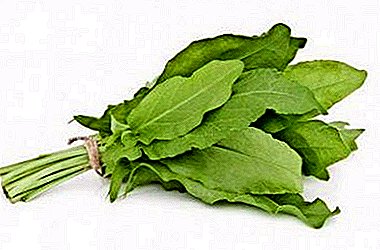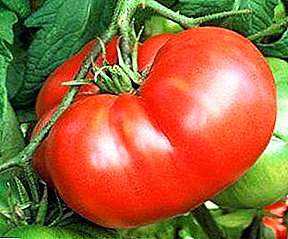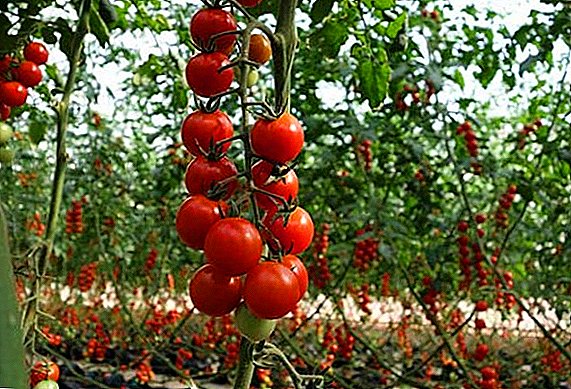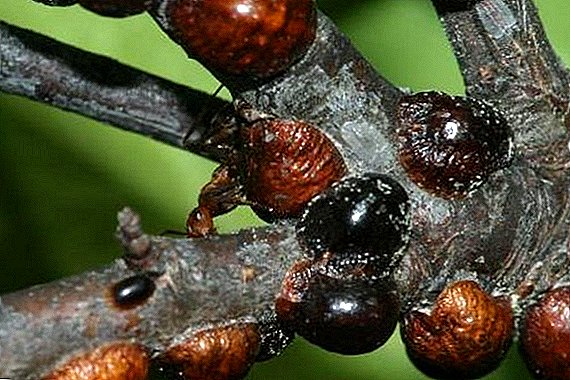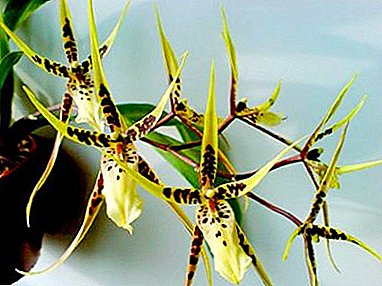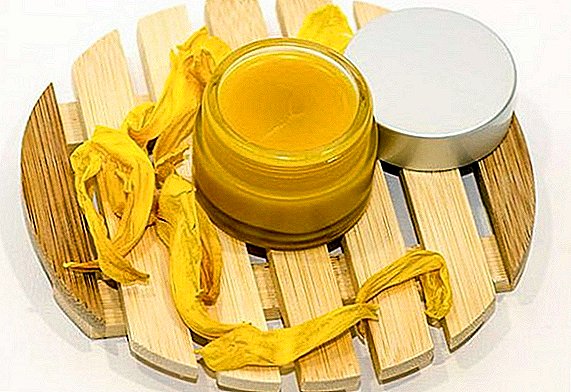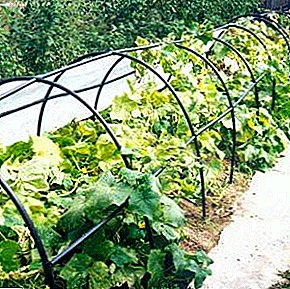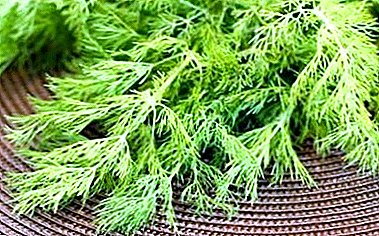
One of the most popular varieties of dill is "Gribovsky". It is grown everywhere in the dachas and in the household farms.
Fragrant greens are dried, frozen, added to salads, soups and other culinary dishes. Dill varieties "Gribovsky" gives not only flavor to dishes, but also an interesting taste.
How to plant and care for a plant in the open field? What is the use of it and does it harm the body? We will answer these and other questions in our article.
Description and photo
- Is he early? Dill "Gribovsky" - an early variety. The first harvest can be tried on the 30th day after the seedlings emerge. Technical maturation comes on day 70.
- What time of year is better to plant? The variety starts sowing in spring in April and continues planting until July. Landing is carried out several times per season. Possible sowing varieties under the winter.
- Are there any other names? The variety "Gribovsky" is called padanets, because of its ability to scatter seeds around itself. New plants that grow from them, have greater vitality.
- Description of the appearance. Dill has large standing leaves with a length of 15-25 cm. The surface of the leaves is smooth, wax, dark green with highly dissected segments. Sheet rosette standing. The inflorescences are multibeam convex, have a diameter of about 20 cm. The mass of one plant varies from 12 grams. up to 30 grams. in technical ripeness.
Below are the photos of dill varieties "Gribovsky":





The main differences from other varieties
Gardeners "Gribovsky" fell in love with his unpretentiousness, bright aroma, pleasant spicy taste and the presence of a large green mass on the bush. These qualities of dill compares favorably with their counterparts.
Advantages and disadvantages
Benefits:
- Resistance to diseases.
- Ability to tolerate lower temperatures.
- The ability to quickly recover from stressful situations.
- Intense aroma.
- Taste qualities.
- Unpretentiousness to external conditions.
Disadvantages: Tendency to self-seeding.
History and geography of habitat
Dill "Gribovsky" bred in the All-Russian Research Institute of plant breeding and seed production of vegetable crops. Grown throughout the Russian Federation, Belarus and Ukraine.
Benefits and contraindications
The composition of dill includes:
- Vitamins A, B1, B2, B5, B6, B9, C, E, PP.
- Macronutrients: potassium, calcium, magnesium, sodium, phosphorus.
- Trace elements: iron, manganese, copper, zinc.
Benefit
- Increases immunity.
- Prevention of kidney disease.
- Helps with hypertension.
- Strengthens the cardiovascular system.
Contraindications
- Individual intolerance.
- Ulcer.
- Hypotension.
- Diabetes.
- The threat of miscarriage in pregnant women.
Use in traditional medicine
Dill is used in folk medicine in the form of tinctures and decoctions.
For medicinal purposes, brew the leaves, roots and seeds of the plant. They are used:
- For the treatment of digestive disorders.
- As a diuretic for kidney disease.
- Dill decoction is used for purulent inflammation of the skin.
- Dill root has a vasodilating effect.
How to plant seeds and seedlings?
 Planting "Gribovsky" can be done with seeds and seedlings. It is subject to cultivation in open ground and at home.
Planting "Gribovsky" can be done with seeds and seedlings. It is subject to cultivation in open ground and at home.
- Before sowing, seeds can be soaked for 2-3 days. At the same time every 5 hours change the water. This procedure will accelerate the emergence of young shoots.
- Seeds are planted to a depth of 1.5 - 2 cm in the previously prepared soil.
- Dill seedlings are grown from seeds that are planted in small pots of 1pc. to a depth of about 2 cm. Further, the seeds are watered abundantly and carefully monitor the soil moisture.
- After the seedlings emerge, the seedlings are grown for about 2 weeks so that the plants can gain a foothold in the soil. And then transferred to the open ground with a clod of earth.
- When planting, the distance between the bushes in the garden leaves about 25 cm.
How to care in the open field?
- Temperature. The plant can tolerate air temperatures as low as -4 degrees, seed germination starts at +3 degrees. Green mass is formed at +18 - +20.
- Watering. Watering on hot days produce at least 2 times a day. At the same time about 2 buckets of water are spent per square meter.
- Shine. With the right choice of place for planting, the variety has enough natural light.
- Priming. Planting dill is better in neutral light soils. Sour soil for him is destructive.
- Feeding. If the plant is grown in fertilized soil, then it does not need additional feeding. Nitrogen-containing fertilizers can be applied to depleted soils. For this purpose, it is recommended to use a fermented nettle extract.
- A place. A place for landing is better to choose a sunny or slightly darkened.
- Weeding. Weeding culture is carried out as needed.
- Loosening. Loosening the soil produced in the aisle beds.
- Hilling. Hilling dill is contraindicated.
Features home care
 A decent crop of dill can be grown at home on the windowsill. This will require compliance with certain conditions:
A decent crop of dill can be grown at home on the windowsill. This will require compliance with certain conditions:
- The soil - A mixture of loose garden and neutral purchased soil for indoor plants will do.
- Regular watering - dill loves moisture. Regular watering is especially important during seed germination.
- Top dressing - Once every 2 weeks it is necessary to feed the bushes with mineral fertilizers.
- Proper lighting - Dill, grown at home, often needs additional lighting. If a place with a "home bed" is located away from the window, then additional light will be needed for 16 hours a day.
- Compliance with temperature - Dill is best grown at a temperature of +18 degrees. When young shoots appear at night, it is desirable to lower the air temperature. If the temperature exceeds 20 degrees, it is good to use additional lighting, otherwise the bushes will be drawn out without forming a thick mass of leaves.
- For the speedy germination of seeds, before planting they should be soaked for 2 days.
- Plant seeds on ground surface, dusting on top of a layer of humus. Approximate seeding rate - 0.3 gr. on 1 square. dm Capacity with crops cover with a film and clean in a warm place.
Pests and diseases
"Gribovsky" grade resistant to diseases. But there are diseases with which he can become infected. It:
- powdery mildew;
- fomoz;
- chalcosporosis.
Dill can be attacked:
- aphids;
- cicadas;
- carrot flies.
The root system may be threatened by:
- caterpillars;
- larvae of the May beetle;
- Medvedka;
- wireworm.
The fight against insects lead folk remedies. The use of chemistry can cause poisoning in humans, as the plant is used in food in its natural form without heat treatment. It is well recommended decoction of tobacco and tobacco dust.
Harvesting
Harvesting can be started on day 30 after seed germination. Cut dill gradually as necessary. Freed areas of soil can be re-cultured.
Dill has become the most common spice in gardeners. Grade "Gribovsky" provides a stock of fresh, fragrant green for the whole summer. It is used in cooking, cosmetology and traditional medicine. Dill seeds treat even babies. Growing this spice does not require a lot of strength, and its benefits are great.



